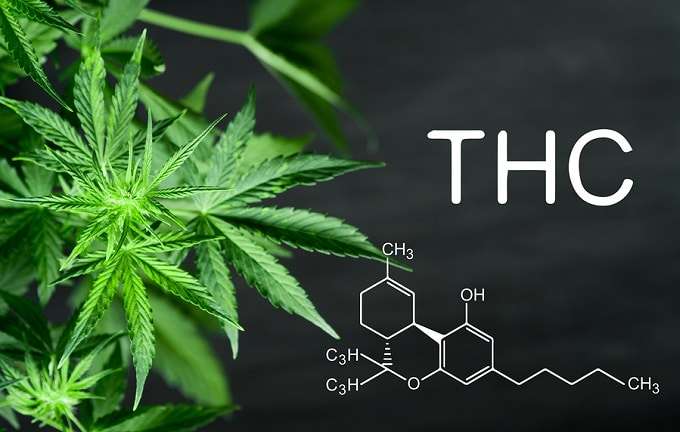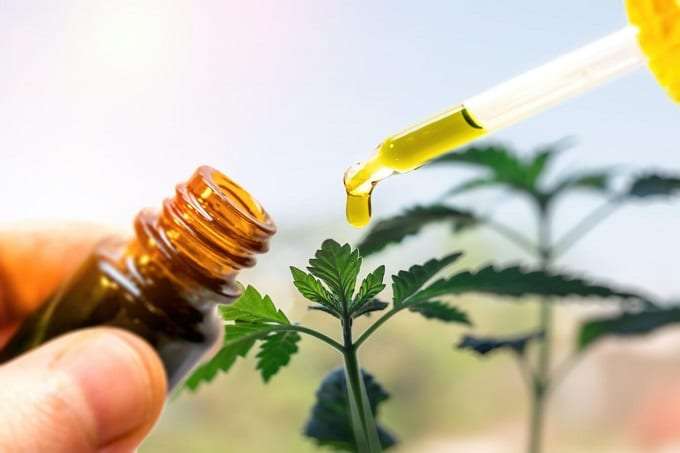What’s the first thing that comes to your mind when you hear the word cannabis?
Let me guess.
It’s the plant that’s ripping the very fabric of our society apart, right?
I don’t blame you. I used to think cannabis was a bad plant, too.
But what if I tell you that instead of ripping our society apart, cannabis has the potential to help millions of people?
Cannabis, long used since ancient times, is known for its various medicinal benefits.
Unfortunately, it’s also known for its psychoactive effects, which is one of the reasons why this plant was made illegal in the first place.
But not all parts of the plant are “bad” though. In fact, you’re about to find out how seriously good the cannabis plant is.
Let me tell you the story of two of the most-studied cannabinoids found in cannabis — tetrahydrocannabinol (THC) and cannabidiol (CBD).
THC – “The High Causer”

The primary cannabinoid that gives cannabis its psychoactive effects is THC.
But you would think that just because THC produce these effects, THC is only good for recreational purposes.
This couldn’t be further from the truth. In fact, THC actually has a lot of medicinal benefits.
When THC stimulates the CB1 and CB2 receptors, it can produce widespread effects that have the potential to help treat various diseases and illnesses:
- THC has analgesic effects. In fact, THC can help improve neuropathic pain.
- THC can inhibit the inflammatory process which worsens conditions like rheumatoid arthritis, glaucoma, cancer, Alzheimer’s disease, epilepsy, multiple sclerosis, etc.
- THC can help reduce stress and anxiety in patients with post-traumatic stress disorder.
Activation of the CB1 receptors is what produces the psychoactive effects that THC is known for.
When CB1 receptors are stimulated, they inhibit the primary inhibitory neurotransmitter in the brain called GABA.
With this inhibited, there will be an overall increased excitation of the neurons due to the higher excitatory neurotransmitters as well as activation of the reward circuitry of the brain which is what causes the “high.”
So how can people who don’t want to get high still get the best out of this medicinal plant?
Enter CBD.
The Powers of CBD

CBD is the non-intoxicating cannabinoid.
It has many of the same medicinal benefits of THC, but it offers even more.
If THC stimulates CB1 receptors to do their magic, CBD is thought to interact with additional receptors to produce their widespread therapeutic effects.
Here, let me tell you how CBD can work its magic for a variety of disease.
And mind you, these are just a few of the diseases that CBD might help! This is not an exhaustive list.
Anxiety and depression
CBD stimulates the 5-HT1A serotonin receptors and the adenosine receptors to produce their calming effects.
Alzheimer’s disease
Two hallmark characteristics of Alzheimer’s disease are the formation of senile plaques due to Beta Amyloid and Tau protein hyperphosphorylation.
CBD has the ability to control the formation of these senile plaques and inhibit hyperphosphorylation.
Arthritis
CBD can not only inhibit the inflammatory process but it can also stimulate the TRPV1 receptors.
When CBD binds to these receptors, desensitization to pain occurs faster, so there will be reduction of pain.
Cancer
CBD can induce apoptosis of cancer cells. It can prevent angiogenesis or the formation of new blood vessels which supply the cancer growth, and it can inhibit cancer cell migration.
The best thing about CBD for cancer is that it only induces apoptosis of the abnormal cells and protects the healthy and non-transformed ones.
Crohn’s disease
CBD suppresses intestinal inflammation and has the ability to reduce hypermotility associated with this disease, so there is reduction in painful diarrhea.
Epilepsy, autism, and multiple sclerosis
One of the mechanisms that worsen these conditions is neuroinflammation leading to excitotoxicity.
This results from too much glutamate in the brain, resulting in hyper excitation of the neurons and making them more permeable to calcium.
Now this is harmful because too high calcium levels inside the neuron will lead to mitochondrial damage and production of destructive enzymes and free radicals.
These destructive enzymes will then leak into the synapses, damage the surrounding neurons, and worsen neuroinflammation.
What CBD does is inhibit neuroinflammation by inducing apoptosis of immune cells and inhibiting the production of cytokines.
With the inflammatory process under control, there will be reduction of excitotoxicity and protection of healthy cells.
CBD is also a very potent antioxidant and can inhibit the effects of free radicals by preventing the process called oxidation which also worsens excitotoxicity.
These are just some of the effects of CBD on different diseases.
But is this all, you ask?
No.
There are at least two more CBD effects worth mentioning.
Remember how our body produces its own cannabinoid-like compounds called endocannabinoids?
These are cannabinoids like anandamide and 2-Arachidonoylglycerol, and they bind to cannabinoid receptors to produce their therapeutic effects.
Unfortunately, they are easily broken down by enzymes, so their beneficial effects are very short-lived.
Now, CBD has the ability to enhance the level of anandamide in the body by preventing fatty acid-binding proteins (FABPs) from transporting anandamide to the enzyme (fatty acid amide hydrolase) that degrades it.
With the FABPs inhibited, there will be more anandamide in the system.
And finally, CBD, together with THC, can work wonders to help treat numerous diseases through what is known as the entourage effect, or the synergistic interaction of the different compounds and terpenes found in cannabis working together to produce therapeutic effects.
But how can they work together when THC produces psychoactive effects?
This is quite interesting, you see, because CBD has numerous ways to counteract the psychoactive effects of THC.
CBD can modulate the body’s way of metabolizing and converting THC into its more potent metabolite by inhibiting cytochrome P450, a liver enzyme that breaks down drugs.
CBD is also a negative allosteric modulator of CB1 receptors.
This means that CBD has the ability to bind with CB1, but not with its orthosteric or active site, and influence how the receptor transmits the signal created by THC.
Both THC and CBD can work together to enhance their therapeutic effects and even minimize their negative ones.
Considering the many therapeutic effects of cannabis you just read about, can you still honestly say that this plant is “bad” for humanity?
